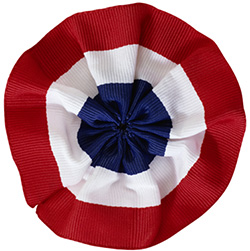Learn

Geography
Review the French Geography presentation below.
French Geography fullscreen version | French Geography text version
Note: The presentation may take a moment to load.

History
Review the French History presentation below.
French History fullscreen version | French History text version
Note: The presentation may take a moment to load.

The French Government
Today, the official name of France is République Française (French Republic). The current government is called the Fifth Republic, and it follows the guidelines set forth in the most recent constitution, which went into effect on October 4, 1958.
Like the United States, the French government has executive, judicial, and legislative branches. The legislative branch is the lawmaking body, and its parliament contains the Senate and the National Assembly. The Senate has 348 members, each of whom serves a six-year term. French senators are elected by an electoral college rather than by the French voters. The National Assembly has 577 members who serve five-year terms, and these members are elected by the French voters. If the Senate and the National Assembly disagree on an issue, the National Assembly makes the final decision.
In the Fifth Republic, there is a president, as well as a prime minister. The president is elected for a five-year term and can run for re-election only once. The president serves as head of state, commander in chief of the French armed forces and is in charge of working with other countries. The prime minister focuses on domestic policy and usually represents the majority party in the National Assembly. The prime minister must be formally appointed by the president.

The French Flag
The French flag, known as Le Tricolour (also spelled Tricolore) flies over all public buildings and is displayed during military and civil ceremonies, as well as on national holidays such as July 14, which is known as Bastille Day. On this day, the French celebrate their independence, and you will often hear references to the French motto of "Liberté, Egalité, Fraternité" (Liberty, Equality, Brotherhood).
Le Tricolour contains three vertical, equal-sized bands of royal blue, white, and red. In order to ensure the flag is displayed properly, the royal blue panel should always be on the left side, closest to the flag pole. The colors red and blue are the ancient colors of Paris, while the color white was typically associated with France and its royalty. Not long after the French Revolution began, the three colors were often brought together to form a cockade, which was a decoration commonly worn on hats. The cockades eventually became part of the uniform of the new French police force known as the National Guard.

In 1790, the three colors were presented in the form of a flag, and on February 15, 1794, Le Tricolour was adopted as the official flag of France.

References
- Corona, L. France. San Diego: Lucent, 2002. Print.
- E, Gofen, and Reymann B. France. 2 ed. Tarrytown: Benchmark Books, Marshall Cavendish, 2003. Print.
- Sonneborn, L. France. New York: Children's Press, an imprint of Scholastic, Inc., 2013. Print.

